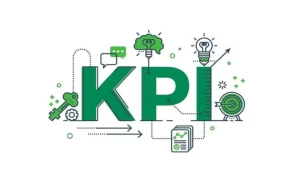WordPress is a widely used and beginner-friendly platform for building websites.
Whether you’re creating a hobby blog, a business site, or an eCommerce store, you can easily build a WordPress website with zero previous web design and development experience.
In this blog post, Dolma will take you through the step-by-step process of building a WordPress website from scratch, providing you with valuable advice and best practices along the way.

Step 1: Choose a Domain Name
The first step in building a WordPress website is to choose a domain name, which will serve as the address for your site. Making the right choice for your domain name is crucial to your online branding.
The domain name should include your company name if you’re creating a business website. You can also consider adding relevant keywords to boost your SEO rankings.
However, it’s important to strike a balance and avoid long URLs that are difficult for users to remember or prone to spelling mistakes.
To check the availability of your desired domain name, you can use domain registration services like Bluehost or Name.com. While domain prices typically range from $8 to $15, you may even be eligible for a free domain when you sign up with certain hosting providers like Bluehost.
Step 2: Purchase Web Hosting
Every website needs to be hosted on a web server, and most WordPress site owners choose to pay a third-party hosting provider for this service.
When selecting a hosting provider, it’s important to consider factors such as uptime rates, security features, and page speeds. Look for a provider that offers high uptime rates and even provides an uptime guarantee.
Security is also crucial, so opt for a hosting provider that offers built-in security features like firewalls and virus scanners. Additionally, choose a hosting provider that offers speed-boosting features such as a Content Delivery Network (CDN).
Step 3: Install WordPress
If you choose a managed WordPress hosting service, WordPress will usually be pre-installed on your account. However, if you need to install WordPress manually, the process may vary depending on your hosting provider.
Generally, you’ll need to log into your hosting control panel and look for options like “Popular Apps” or “Popular Software”. Alternatively, some hosting panels include the Softaculous installer, which provides a simplified installation process for WordPress.
After installing WordPress, you’ll need to configure your primary domain, which is the address that people will see in their address bars when they visit your site.
In your hosting provider’s control panel, look for options labeled “Domains” to select your custom domain as the primary URL.
Step 4: Choose a WordPress Theme
WordPress comes with a default theme, but you can choose from a wide variety of free and premium themes to customize the appearance of your website. When selecting a theme, consider the specific needs of your website.
For example, if you’re building an eCommerce store, look for themes designed specifically for online stores. You can browse and install themes from the official WordPress repository or upload a premium theme in the form of a .zip file.
Take the time to research and choose a theme carefully, considering factors such as recent reviews, the date of the latest update, and compatibility with plugins and page builders.
Step 5: Customize Your Site
Once you’ve chosen a theme, it’s time to customize your WordPress website to align with your brand and goals. Start by changing the site title, which appears at the top of every page.
Use the name of your business or website for the title, ensuring it accurately represents your brand. You can also add a tagline, a short phrase or sentence that appears beneath the title, to provide additional context or information.
Next, decide whether you want a dynamic or static homepage. A dynamic homepage displays your most recent content in reverse chronological order, making it ideal for blogs.
On the other hand, a static homepage creates a dedicated page that serves as the main landing page for your website. Choose the option that best suits the purpose of your website and configure it in the Reading Settings of your WordPress dashboard.
Step 6: Create Pages and Posts
WordPress websites consist of posts and pages. Blog posts are ideal because they automatically display the most recent content at the top. Pages, on the other hand, are static and are commonly used for essential information like About Us and Contact Us pages.
To create a post, navigate to the Posts section in your WordPress dashboard and click on “Add New”. Here, you can add a title, insert photos and videos, and format your content using blocks. Save your changes as a draft or publish the post when you’re ready.
For pages, go to the Pages section and click on “Add New”. The process of creating a page is similar to creating a post. Add content to the page using blocks, and remember to save your changes or publish the page when you’re done.
Consider the needs of your website and create a combination of pages and posts that provide valuable information to your visitors.
Even if you’re primarily running a blog, having additional pages like an About Us or Contact Us page can enhance the user experience and credibility of your site.
Step 7: Enhance Your Site with WordPress Plugins
WordPress plugins are powerful tools that can extend the functionality of your website. There are plugins available for almost any task imaginable.
To add a plugin to your WordPress site, navigate to the Plugins section in your dashboard and click on “Add New”. Here, you can search for plugins and install them with a few clicks.
Some essential plugins to consider include those for SEO and analytics. Plugins like All In One SEO and Yoast SEO can help optimize your website for search engines and provide valuable insights.
If you want to collect data from your visitors, consider using a contact form plugin like Formidable Forms, which allows you to create customized forms with ease.
If you’re running an eCommerce store, WooCommerce is a popular plugin that provides all the necessary features for online selling.
Conclusion
Building a WordPress website is an accessible and rewarding process, even for beginners. By following the steps outlined in this comprehensive guide, you can create a professional and functional website that meets your unique needs.
Remember to choose a domain name that aligns with your brand, select a reliable web hosting provider, customize your site with a suitable theme, and enhance its functionality with plugins. You can easily build a website that stands out in the digital landscape by using WordPress.
For more tips and tricks on building and optimizing your WordPress website, be sure to check out our YouTube tutorials and follow us on social media. Happy website building!


